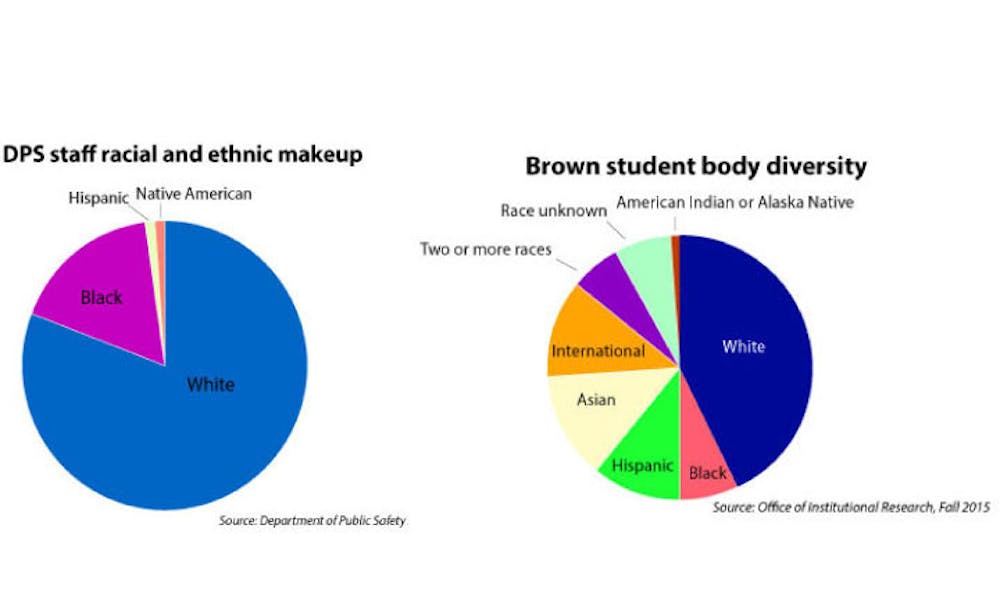Police departments nationwide have come under fire in recent years for failing to represent the communities they police and engage with those communities in an effective, positive manner. Amid these trends, the Department of Public Safety has attempted to improve its own commitment to diversity with input from the Brown community in mind, said Deputy Chief of Police Paul Shanley.
The Diversity and Inclusion Action Plan released in February included a stipulation that DPS investigate ways to improve the diversity and training of its officers.
“The (DIAP) definitely highlighted some things that showed how we certainly need to do a better job with connecting to the community,” said Chief of Police Mark Porter. He added that DPS staff spent the past summer developing the first phase of the department’s response to the DIAP in order to “further enhance the department’s community relations.”
“We’ve provided new and additional training to all of our officers in the area of diversity training, fair and impartial policing and de-escalation and verbal communication skills,” Porter said. He added that the department’s national accreditation demonstrates its commitment to effective officer training, even though “we also see the need to bring in additional training for the officers to deal with the current issues and times.”
It is important that officers, when engaging with the communities they serve, share “common experiences that often correspond to racial identity, though shared identity does not erase power imbalances or ensure mutual empathy, which is the most important trait officers can bring with them into any community,” wrote Stefano Bloch, postdoctoral senior research associate in urban studies, in an email to The Herald.
“Talking about some of these procedural justice issues or the concerns some people might have with the department can go a long way,” Porter said, “but it’s clear that public safety needs to do a better job with connecting, communicating and engaging with the community in a very positive manner.”
DPS lags the undergraduate student body in racial and ethnic diversity as well as gender diversity.
According to a 2016 employee composition assessment, white and black officers account for 80 percent and 17 percent of all Brown DPS staff, respectively. Men make up 74 percent of the department’s staff, and women make up 26 percent. When considering only sworn officers, the representation of women falls to 19 percent. Representation of Hispanics and Asians is even more scarce, with each group accounting for no more than about a single percentage point of the department’s staff. As of fall 2015, the student body was 11.4 percent Hispanic and 13.4 percent Asian.
Nationwide, people of color constitute about a quarter of police forces, according to a 2007 survey by the Bureau of Justice Statistics.
A New York Times analysis of the 2007 Bureau of Justice Statistics data indicates that the percentage of whites on police forces is on average more than 30 percentage points higher than in the communities they serve.
“The diversity makeup of the force is a good one when we look at the Brown community,” Porter said, “even in relation to the greater community in Providence.”
“We’ve been very committed to achieving diversity within the workplace,” Porter said, adding that “we think the department’s recruitment efforts reflect that commitment.”
DPS engages in a number of activities to encourage the recruitment of a diverse range of officers, including a mentorship program and a “Cooking with Cops” program that pairs officers with young members of the Providence community, Porter added.
“By mentoring students, we can really build an early interest in law enforcement,” Shanley said. “It used to be that you wanted to target college kids, but now you want to start at the high school age to get these young men and women interested in law enforcement,” he added.
In the past three years, the gender diversity of DPS has remained the same, while the department hired three black officers in 2016, increasing the proportion of black officers from 14 percent to 17 percent of the force.





